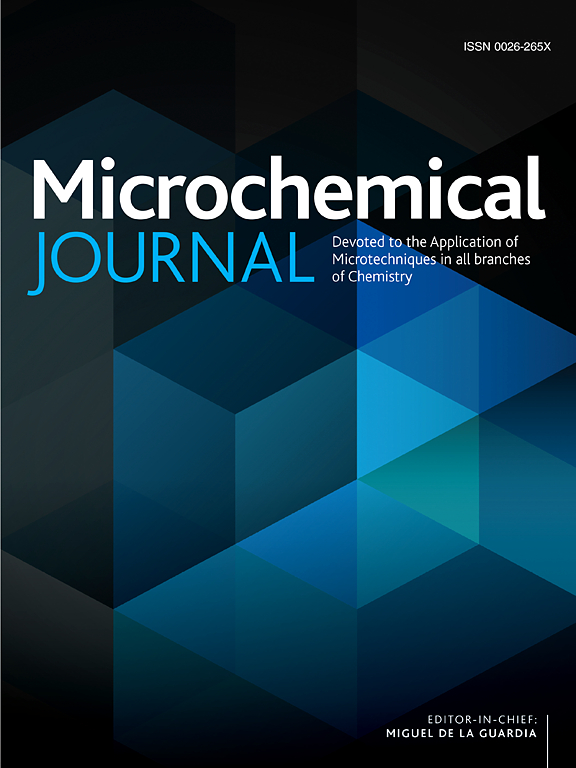A robust electrochemical biosensor with cascade cleavage amplification mediated Pt@CeO2 nanoprobe machine for ultrasensitive microRNA-21 assay
IF 4.9
2区 化学
Q1 CHEMISTRY, ANALYTICAL
引用次数: 0
Abstract
Herein, a biosensing system was designed based on tripedal DNAzyme walker integrated nanoprobe signal amplification strategy for realizing ultrasensitive determination of the microRNA-21. In this work, the two-dimensional MoSe2/MXene nanocomposite with high electronic conductivity was synthesized as electrode signal amplification materials to immobilize more capture DNA and accelerate electron transport. After adding microRNA-21, the tripedal DNAzyme walker was activated on the surface of the Pt@CeO2 nanoclusters, which were as nanozyme to construct the high-performance nanoprobe machine. Then, the tripedal DNAzyme strands could cleave the substrate strands and walk onto the nanoprobe for amplifying the signal remarkably. Furthermore, the detectability of the electrochemical biosensor was verified by DPV, acquiring a wide linear response in a range of 0.1 fM to 1 nM, as well as the limit of detection was 0.04 fM. Hence, such double signal amplified strategy could not only provide excellent selectivity and specificity, but also achieve superior repeatability and stability in real complex serum samples. Therefore, the designed biosensing platform detected different microRNA through modulating the recognition sequence, which might provide a general strategy for various cancer analyses and have a promising potential for clinical application.

求助全文
约1分钟内获得全文
求助全文
来源期刊

Microchemical Journal
化学-分析化学
CiteScore
8.70
自引率
8.30%
发文量
1131
审稿时长
1.9 months
期刊介绍:
The Microchemical Journal is a peer reviewed journal devoted to all aspects and phases of analytical chemistry and chemical analysis. The Microchemical Journal publishes articles which are at the forefront of modern analytical chemistry and cover innovations in the techniques to the finest possible limits. This includes fundamental aspects, instrumentation, new developments, innovative and novel methods and applications including environmental and clinical field.
Traditional classical analytical methods such as spectrophotometry and titrimetry as well as established instrumentation methods such as flame and graphite furnace atomic absorption spectrometry, gas chromatography, and modified glassy or carbon electrode electrochemical methods will be considered, provided they show significant improvements and novelty compared to the established methods.
 求助内容:
求助内容: 应助结果提醒方式:
应助结果提醒方式:


